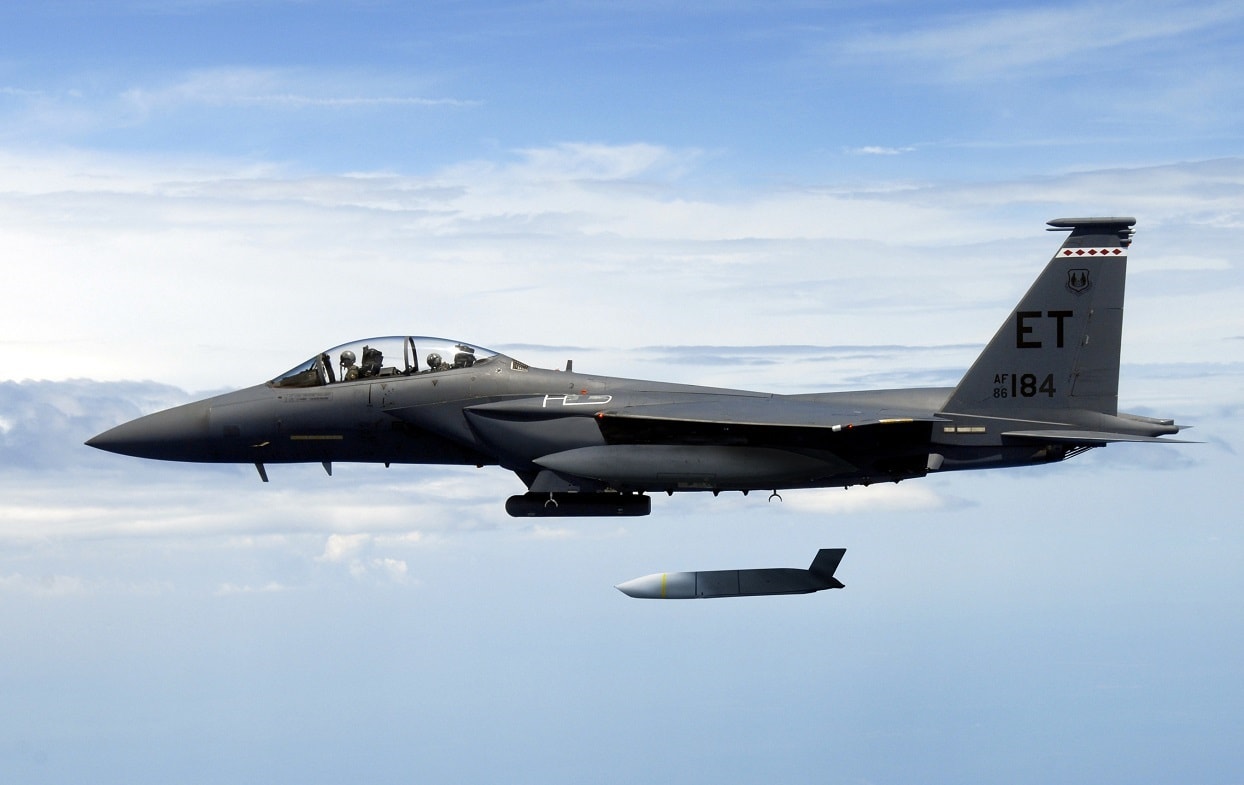The US Air Force already fields some of the best fighters and bombers ever built and has more highly sophisticated projects in the pipeline.
But its current fleet and those future platforms may face an unexpected obstacle in the next war: their own weapons.
The Air Force has invested heavily in sophisticated aircraft, but its air-to-air missile arsenal has fallen behind in many respects. The main concern is that the limited range of outdated weapons will make those aircraft easy targets for adversaries with advanced air defenses and longer-range missiles.
“We need fifth-gen weapons for our fifth-gen Air Force,” Gen. Mark Kelly, head of Air Combat Command, said at a Mitchell Institute for Aerospace Studies event in October.
“We’ve invested a lot of time, energy, and national resources to build a low-observable force,” Kelly said. “We will not get a good return on that investment of low-observable platforms if, due to weapons limitations, we have to push them into ranges where everyone is observable.”
The biggest threat comes from the air-to-air missiles of the Chinese and Russian air forces, both of which have been modernizing their arsenals with the threat from the US Air Force in mind.
China’s AAM arsenal is particularly impressive, considering its humble origins.
China’s first AAM, the PL-1, was a copy of the Soviet K-5 and was very underwhelming. China’s PL-2 was a licensed-built version of the Soviet K-13. The K-13 was reverse-engineered from a AIM-9 Sidewinder that hit a Chinese fighter during a dogfight with Taiwanese fighter jets in 1958 but failed to detonate.
Later Chinese air-to-air missiles were also copies or licensed-built versions of foreign missiles, but China’s AAM arsenal today features domestically produced models with advanced capabilities.
The PL-10, China’s most advanced short-range AAM, has a range of about 12 miles and has “off-boresight” capability, which enables the pilot to lock onto a target by simply looking at it instead of flying directly behind it.
The PL-12, China’s medium-range AAM, boasts a range between 43 miles and 62 miles and features a dual-thrust motor that can exceed Mach 4. The missile has a fire-and-forget capability and active radar homing and can endure 38Gs.
The PL-15 long-range AAM is the most impressive in China’s arsenal. With a range between 93 miles and 124 miles, the PL-15 likely outdistances its closest American counterpart, the AIM-120D.
The PL-15 has an active electronically scanned array radar and is believed to have a composite guidance system that enables it to make course corrections with information from an airborne early warning and control aircraft like the KJ-2000. Crucially, the missile can make course corrections without the pilot turning on his radar and giving away his position.
China is also currently developing the PL-XX, which may have a range between 186 miles to 248 miles.
Russia’s arsenal
Russia is also modernizing its arsenal, recovering from a lull in AAM development after the breakup of the Soviet Union.
Most Russian fighter jets use variants of the R-73 short-range AAM or the R-27 medium-range AAM. R-73 variants have ranges of about 18 miles to 24 miles, while R-27 variants have ranges from 15 miles to about 60 miles.
In 2010, after years of delays, the Russian Air Force introduced the R-77-1, which has active radar guidance and a range of about 68 miles.
Russia is also developing newer models with longer ranges. The K-77M, for instance, is an upgraded version of the R-77-1 reportedly being designed for use on the Su-57 stealth fighter.
The K-77M is believed to have a range of over 100 miles and will be stored internally on the Su-57, allowing the jet to maintain its stealth profile.
The Russians are also developing the R37M, a modernized variant of the R-37 beyond-visual-range missile that will improve upon its 124-mile range. The R-37 was at one time only able to be used with MiG-31 interceptors, but Russia has developed ways to use it with Su-35s and Su-57s.
US development
Aware of the dangers of falling behind, the US is working on several new missiles to maintain its air-to-air dominance.
The US Air Force specifically wants missiles with longer ranges than its longest-range AAM, the AIM-120D. The AIM-120D’s exact range is classified but is estimated to be about 100 miles.
Boeing’s recently unveiled Long-Range Air-to-Air Missile will have a two-stage rocket motor configuration, giving it a higher speed and longer range than the AIM-120D.
Lockheed Martin’s AIM-260 Joint Advanced Tactical Missile is the Air Force’s highest priority air-to-air weapon and has been developed in strict secrecy. It may have twice the range of the AIM-120D and is expected to be carried by F-22s, F-35s, F-15EXs, and Navy F/A-18s.
About 30 Full-Scale Aerial Target missions have been flown in support of the AIM-260 program, and the Air Force has said it hopes to have it in service in 2022.
The Air Force also plans to acquire longer-range bombs for ground targets.
Last year, Boeing unveiled a plan for a long-range version of the Joint Direct Attack Munition. Called the Powered JDAM, it has a wing kit and propulsion module that will extend its range up to 20 times — though it will decrease the payload to 500 pounds from the JDAM’s 2,000 pounds.
The Air Force is also testing the new GBU-53/B StormBreaker, a 200-pound smart munition that uses millimeter wave radar, infrared imaging, and semi-active lasers to reach targets as far as 45 miles away.
Some of those projects will take years to develop, but the efforts reflect the Air Force’s focus on working with private industry to develop new weapons for emerging threats.
“If we do not get our relationship with industry correct, we’ll end up with fifth-generation fighters shooting fourth-generation weapons against a sixth-generation threat,” Air Force Chief of Staff Gen. Charles Brown Jr. said in September.
Benjamin Brimelow is a reporter at Business Insider.

